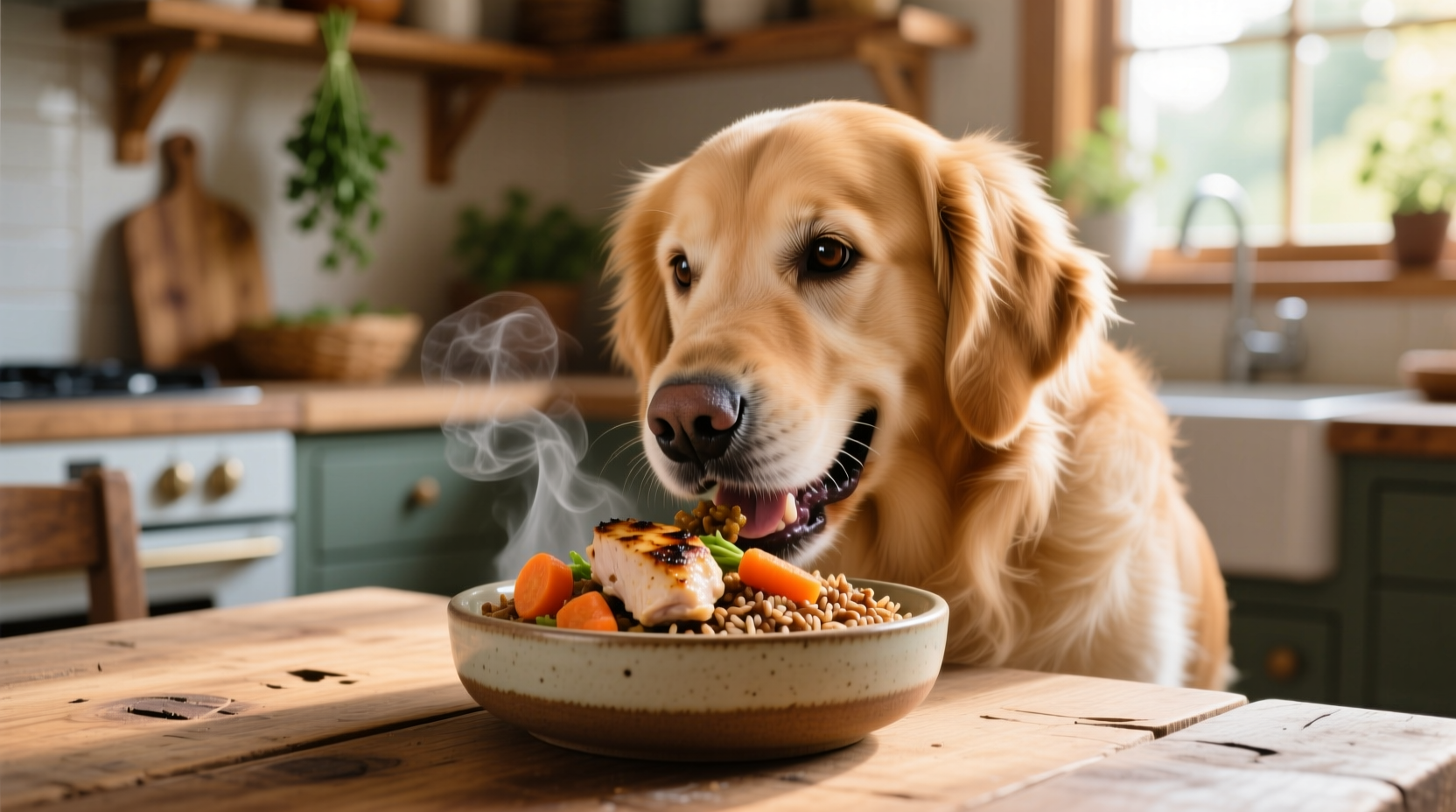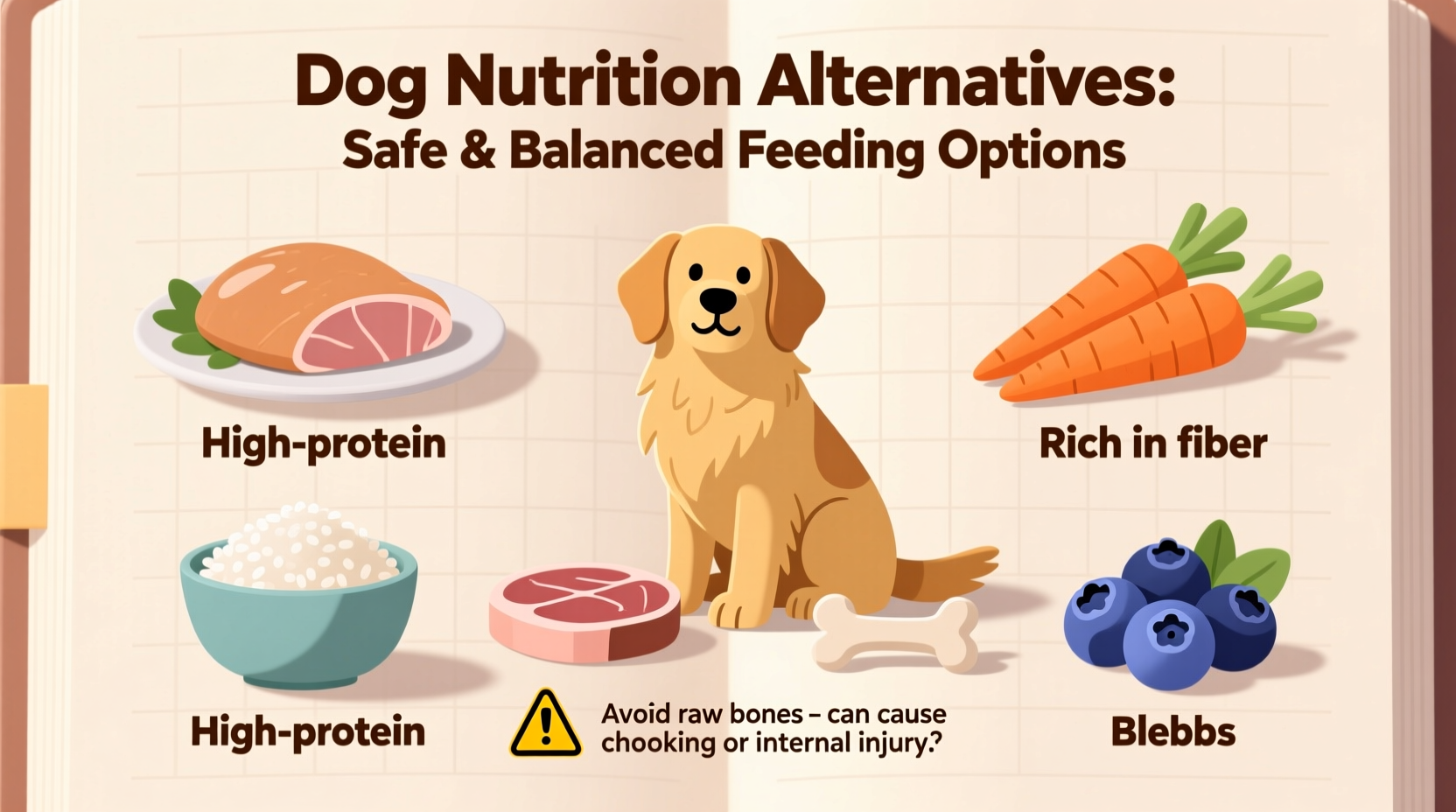Understanding Safe Dietary Alternatives for Your Dog
Many pet owners explore alternatives to commercial dog food for various reasons—cost concerns, ingredient quality questions, or special dietary needs. However, making informed choices is crucial for your dog's health. Unlike humans, dogs have specific nutritional requirements that must be met to maintain optimal health throughout their life stages.
Why Dietary Changes Require Careful Consideration
According to the American Veterinary Medical Association, dogs require a balanced ratio of proteins, fats, carbohydrates, vitamins, and minerals. Commercial dog foods are formulated to meet these requirements, while homemade alternatives often lack proper nutritional balance without careful planning. A study from Cornell University's College of Veterinary Medicine found that 95% of homemade dog food recipes shared online fail to provide complete nutrition.
Safe Human Food Alternatives (With Proper Preparation)
When properly prepared and given in appropriate portions, certain human foods can supplement or temporarily replace commercial dog food:
Protein Sources
- Cooked lean meats: Chicken, turkey, and beef (without seasoning or bones)
- Eggs: Fully cooked, provide excellent protein and fatty acids
- Fish: Cooked salmon or white fish (deboned), rich in omega-3 fatty acids
Vegetable Options
- Carrots: Raw or cooked, excellent for dental health
- Green beans: Low-calorie option rich in fiber and vitamins
- Pumpkin: Plain canned pumpkin aids digestion
Fruit Treats (in moderation)
- Blueberries: Packed with antioxidants
- Apples: Remove seeds and core first
- Bananas: High in potassium but also sugar

Critical Foods to Avoid Completely
Some human foods are toxic to dogs. The ASPCA Animal Poison Control Center reports these as most dangerous:
| Food Category | Specific Items | Potential Effects |
|---|---|---|
| Chocolate & Caffeine | Dark chocolate, coffee, tea | Cardiac issues, seizures, death |
| Sweeteners | Xylitol (in sugar-free products) | Liver failure, hypoglycemia |
| Vegetables | Onions, garlic, leeks | Anemia, red blood cell damage |
| Fruits | Grapes, raisins | Kidney failure |
Creating Balanced Meals: What Most Owners Miss
Simply replacing dog food with human food isn't enough. Dogs require specific nutrient ratios that vary by age, size, and health status. A balanced homemade diet typically needs:
- 40-50% protein from quality animal sources
- 30-50% vegetables for fiber and micronutrients
- 10-15% carbohydrates
- Essential fatty acids
- Calcium supplementation (critical for bone health)
The UC Davis Veterinary Medical Teaching Hospital emphasizes that calcium deficiency is the most common nutritional problem in homemade dog diets, potentially causing serious skeletal issues.
When Commercial Dog Food Is Necessary
While alternatives exist, commercial dog food remains the safest option in several scenarios:
- Puppies: Require precise nutrient ratios for proper development
- Dogs with medical conditions: Kidney disease, allergies, or pancreatitis often need specialized formulas
- Working dogs: Require specific energy-dense formulations
- Senior dogs: Need adjusted nutrient profiles for aging bodies
Transitioning Safely to Alternative Foods
If you decide to incorporate alternatives, follow this gradual approach:
- Consult your veterinarian for personalized recommendations
- Start with 25% alternative food mixed with 75% regular food
- Monitor for digestive issues over 3-5 days
- Gradually increase alternative food percentage over 7-10 days
- Track weight and energy levels throughout the transition
Practical Implementation Tips
For owners committed to supplementing or replacing commercial food:
- Use a digital kitchen scale for precise measurements
- Consult a veterinary nutritionist for balanced recipes
- Consider commercial fresh food delivery services as a middle ground
- Never make sudden, complete dietary changes
- Keep a food diary tracking ingredients and your dog's response
When to Revert to Commercial Dog Food
Immediately return to commercial food if you notice:
- Unexplained weight loss or gain
- Chronic digestive issues (vomiting, diarrhea)
- Dull coat or skin problems
- Lethargy or decreased activity levels
- Excessive scratching or behavioral changes











 浙公网安备
33010002000092号
浙公网安备
33010002000092号 浙B2-20120091-4
浙B2-20120091-4